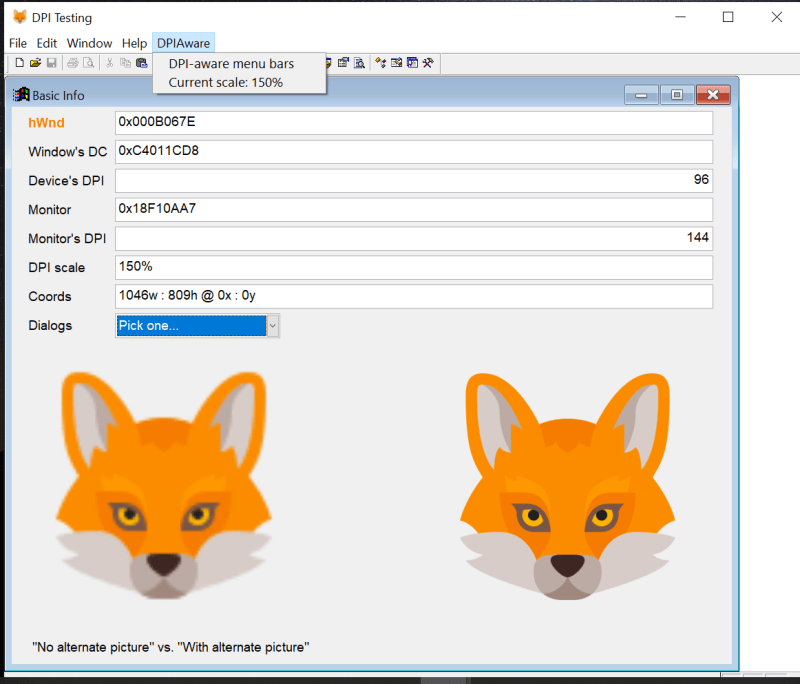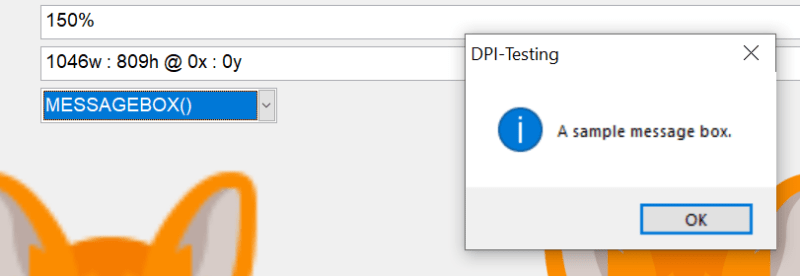Gerrit Broekhuis
Programmer
Hi,
I know it’s best to set an application’s DPI Awareness with a myapp.exe.manifest file (and that is what I do indeed).
Another - less effective - way is to use WIN32API and call SetProcessDPIAware().
I would like to know if there is something like “GetProcessDPiAware()”, to get the DPI awareness from within an application.
This would verify the DPI Awareness is set correctly.
Or is there another logical check for DPI Awareness? I don’t want to rely on visual verification, as most customers don’t notice any difference.
Regards, Gerrit
I know it’s best to set an application’s DPI Awareness with a myapp.exe.manifest file (and that is what I do indeed).
Another - less effective - way is to use WIN32API and call SetProcessDPIAware().
I would like to know if there is something like “GetProcessDPiAware()”, to get the DPI awareness from within an application.
This would verify the DPI Awareness is set correctly.
Or is there another logical check for DPI Awareness? I don’t want to rely on visual verification, as most customers don’t notice any difference.
Regards, Gerrit



